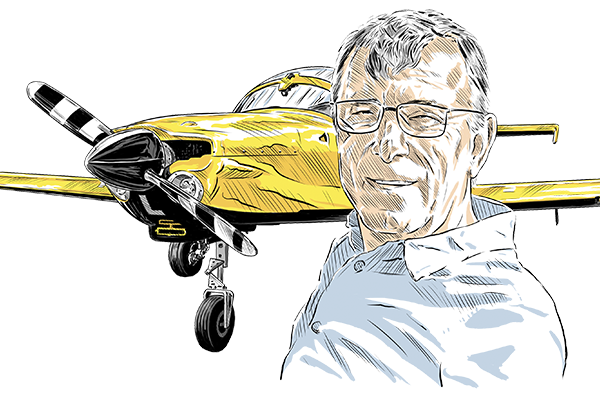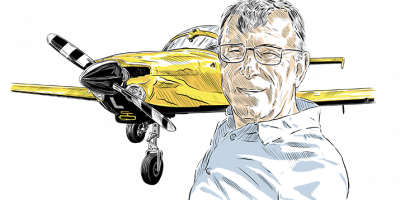There is nothing like another aircraft calling ‘deadside’ to sharpen up your lookout when midway through your own deadside descent. Unfortunately, it often takes this sort of trigger to awaken us from our torpor and remind us that we are not alone in our ‘sky-space’. Other things get our eyes scanning outside the cockpit, of course – ‘traffic’ calls from an ATCRU or an alert through the likes of SkyDemon, FLARM or TIS/TCAS. Or perhaps just a flicker of something in our peripheral vision.
These accidents remind us just how vital it is to practise effective and regular lookout but also highlight where lookout has significant limitations.
Accident 1
The accident flight, in a Cessna 152, was recorded on the club signing-out sheet by the instructor as Exercise 7.1 (best rate of climb) and Exercise 8.1 (glide descent). Following take off, the aircraft climbed steadily up to an altitude of 2,000ft before turning on course to the local training area north-west of the aerodrome. Four minutes later the crew confirmed with Wycombe Tower that they had left the circuit area. There were no further radio comms. Having reached 4,000ft, the aircraft turned left onto a steady north-westerly course and then began a sustained descent which continued until the point of collision 14 minutes after take-off.
“The pilot would need to have pitched at least 24° nose-down to have seen the helicopter”
The instructor of a Guimbal Cabri G2 helicopter was on his second detail, a repeat navigation exercise with a different student. The Cabri left shortly after the Cessna, climbing initially to the south-west, before turning north and then north-west. The instructor advised Wycombe Tower they were leaving the circuit to the north. There was no further radio communication from the helicopter which climbed to, and kept, an altitude of around 1,500ft amsl until the point of the collision.
Fixed-wing aircraft with forward-mounted engines have a restricted view ahead and below the flightpath. In the absence of a turn, the Cessna pilot would need to have pitched the aircraft at least 24° nose-down to have had any chance of observing the helicopter. Additionally, the conspicuity of a small helicopter against an unreflective background such as open fields and trees, is very low.
Accident 2
Eight aircraft were participating in an annual charity event at White Waltham Airfield, Berkshire. The airfield is situated in congested airspace, 11nm west of Heathrow Airport, on the edge of the London controlled airspace. The route to be flown was predominantly under controlled airspace with a base of 2,500ft amsl.
Prior to the aircraft departing the pilots attended a briefing. As the deputy airfield / safety manager was not available due to sickness, another pilot was asked to conduct the brief. This was because he had flown at this event previously, but no guidance was offered.
“The tyre of the Fuji contacted the Cessna’s wing just inboard of the tip leaving a mark”
In the brief he instructed the pilots to fly a counterclockwise route from White Waltham via reporting points. They were reminded to keep a good lookout, given the number of aircraft involved, and communicate clearly when approaching the airfield. They were also told that should any passenger feel unwell they were to return to the airfield immediately. The briefing did not include a discussion of how all the participating aircraft would be deconflicted or how they would communicate.
The pilot of a Fuji Aero Subaru, a low-wing aircraft, stated that he took off at about 0940 with one disabled child and his carer. He believes he changed frequency from White Waltham’s A/G radio frequency to listen on a Lower Airspace Radar Service. When the aircraft was about three nm south-east of reporting point November, he felt a ‘bump’ beneath the aircraft that he believed was an air pocket. He continued with the route and landed uneventfully at about 1015. He did not hear an Airprox being filed.
The pilot of a Cessna 172R high-wing aircraft stated he was allocated two disabled children and one adult carer for his first flight. Prior to engine start, one of the children became verbally and physically unsettled, but was reassured by his carer. They took off at 0952, turned right downwind and departed the circuit on a north-westerly heading towards point November, remaining on White Waltham’s A/G radio frequency.
Once airborne the previously unsettled child became vocal. Fearing he may become physically disturbed again, the pilot decided to shorten the route. Shortly after leaving the Aerodrome Traffic Zone, while straight and level, the pilot noticed a bright red aircraft above, in his 8 o’clock position, converging on his aircraft. He then lost sight of it above and behind his aircraft’s high-wing, becoming visual again when it was in his 1 to 2 o’clock position. It then was seen to descend before disappearing from his sight. He didn’t have time to take avoiding action but filed an Airprox on White Waltham’s A/G radio frequency. He continued the flight, landing at 1009.
Both pilots then flew another flight without incident. After landing from that flight, the Cessna pilot noticed damage to the aircraft’s right wingtip and informed the Fuji pilot that they must have collided in flight. Further analysis showed the tyre of the Fuji contacted the wing, just inboard of the tip and moved outwards leaving a mark.
Accident 3
The model glider pilot reported that he and others were flying remotely piloted gliders from their club’s field at Fish Meadow, Upton-upon-Severn, Worcs. The 1.8kg glider had an electrically powered propeller to assist with launching, a wingspan of 3.8 metres and was fitted with a height limiter that automatically removed the power to the motor at a predetermined height above the launch site or after 30 seconds, whichever occurred first.
The glider was hand launched and climbed, under the power of its motor, to 100 m when the motor automatically cut, which was confirmed by the on-board telemetry. After about 10 mins, as the glider was flying slowly in a thermal, the model gliders’ pilot heard the sound of a powered aircraft to his right flying from north to south. As the aircraft entered his peripheral vision he determined it was flying a course approximately along the River Severn ‘at a low level and travelling quite quickly’. He was unable to take avoiding action before the glider and the powered aircraft collided while over the river. The glider’s telemetry, just before the collision, was 190m agl (630ft agl).
The pilot of a Pioneer 300 reported that he was on a local flight from Gloucestershire Airport. As he approached Upton-upon-Severn, the pilot and his passenger noticed two model aircraft flying from a field to the east of the river, ‘well below them’, as they flew round the perimeter of the field. The pilot then headed away from the area. A shortly afterwards there was a ‘loud thud’ as the aircraft struck what the pilot believed was a seagull, seeing a slim grey / white object pass over the left wing.
After checking that the aircraft handled normally the pilot contacted Gloucester Approach and informed them that he was returning as his aircraft had suffered a substantial bird strike. The aircraft subsequently landed safely. The aircraft pilot commented that he was aware of the presence of the model aircraft flying site and had seen activity there on previous occasions. However, before this accident he did not realise how big the models were or how high they were flown.
Accident 4
A Beech Travel Air D95A aircraft departed Tyabb Airport, Victoria for an Instrument Flight Rules training flight. On board were an instructor and student. Some 15 minutes later, the pilot of a Piper PA44-180 Seminole, advised Air Traffic that they were taxying for departure from Mangalore Airport. On board was an authorised testing officer, who was testing the pilot for an instrument flight rating.
The Beech tracked as per the flight plan and, six minutes after the Piper became airborne, began a descent from 6,000ft amsl for airwork at Mangalore. Radio communication indicated the airwork was to occur between 4,000ft and ground level. Shortly after, Mangalore ATC informed the Beech of the Piper’s departure and subsequently passed traffic information about the Beech to the Piper aircraft. Some five minutes later both aircraft collided and all four pilots were fatally injured.
At the time of the accident, the automatic weather station 8km north of the collision location, recorded two cloud layers: one scattered at 3,500ft amsl and a second broken layer at 4,200ft amsl, about the collision altitude. Mangalore Airport is non‑controlled, and utilised a ‘Common Traffic Advisory Frequency’ (CTAF). Surrounding the Mangalore CTAF was Class G non‑controlled airspace. In Class G airspace, air traffic controllers provide traffic information to IFR aircraft about other conflicting IFR and observed VFR flights.





